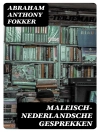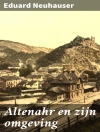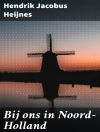In ‘Ancient Scottish Lake-Dwellings or Crannogs, ‘ Robert Munro offers a meticulous examination of the fascinating prehistoric structures known as crannogs that dot Scotland’s lochs and lakes. This seminal work combines archaeological analysis with historical context, presenting a comprehensive view of how these unique dwellings functioned and their significance within ancient Scottish society. Munro’s literary style is characterized by clear, accessible prose, enriched with empirical detail and research, making intricate historical narratives approachable to both scholars and lay readers alike, while honoring the lore surrounding these remarkable sites. Robert Munro was a pioneering Scottish antiquarian whose relentless passion for archaeology and history catalyzed this pivotal study. His firsthand investigations of over 40 crannogs, coupled with his academic background, instilled in him a profound understanding of the interplay between landscape and human habitation. Munro’s dedication to preserving Scotland’s archaeological heritage was evident throughout his career, revealing a deep-rooted appreciation for the interconnectedness of past and present. This book is a must-read for anyone interested in Scottish history, archaeology, or the broader themes of human adaptation to landscape. Munro’s insightful observations elevate crannogs from mere historical curiosities to symbols of resilience and ingenuity, rendering this work essential for both advanced scholars and history enthusiasts wishing to delve deeper into Scotland’s rich heritage.
เกี่ยวกับผู้แต่ง
Robert Munro, M.A., M.D., was a Scottish author and antiquary distinguished for his archaeological research and scholarly contributions to the understanding of prehistoric Scotland. His seminal work, ‘Ancient Scottish Lake-Dwellings or Crannogs, ‘ is a definitive treatise on the subject of crannogs – artificial islands constructed in lakes and wetland areas, which served as dwellings in ancient Scotland. Munro’s book, first published in 1882, meticulously documents the construction, distribution, and cultural significance of these structures, drawing from exhaustive field research and excavation findings. His approach combined precise observation with a breadth of historical and ethnological comparison, reflecting the interdisciplinary nature of archaeological inquiry in the late 19th and early 20th centuries. Munro’s literary style is characterized by clarity and thoroughness, aimed at both scholarly audiences and informed lay readers. His work not only shed light on the enigmatic lake-dwellings but also contributed to broader discussions on the evolution of human habitation and society. Though the specifics of his biography, including his birth and death dates, may not be widely noted, Munro’s academic legacy endures through the meticulous scholarship embodied in his published research on Scotland’s ancient past.












